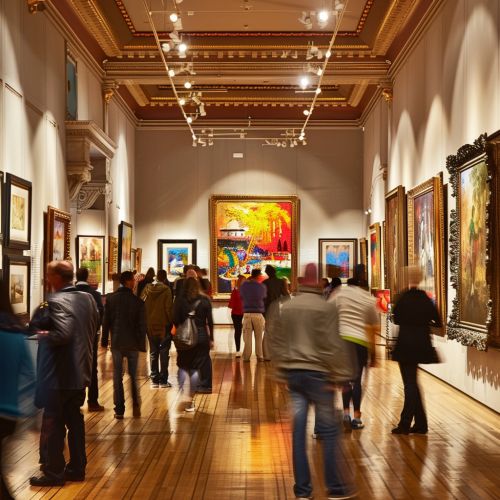Psychology of Art
Introduction
The psychology of art is a complex field that studies the perception, understanding, and interpretation of art from a psychological perspective. It encompasses a broad range of topics, including the cognitive processes involved in the creation and appreciation of art, the emotional and affective responses elicited by art, and the sociocultural factors that influence art perception and production.


Cognitive Processes in Art Perception and Production
Art perception and production involve a multitude of cognitive processes. These include perception, attention, memory, and creativity, among others. The cognitive processes involved in art perception and production are not isolated, but rather, they interact with each other in complex ways to contribute to the overall experience of art.
Perception
Perception is a fundamental process in the experience of art. It involves the interpretation of sensory information to understand the environment. In the context of art, perception involves the interpretation of visual (and sometimes auditory or tactile) information to understand and appreciate a work of art.
Attention
Attention is another critical cognitive process involved in art perception. It refers to the selective focus on certain aspects of the environment while ignoring others. In the context of art, attention can be directed towards various elements of a work of art, such as its color, form, texture, and composition.
Memory
Memory plays a crucial role in art perception and production. It allows individuals to store and retrieve information about past experiences with art, which can influence their current perception and interpretation of art.
Creativity
Creativity is a vital cognitive process involved in art production. It involves the generation of new and original ideas, which are then transformed into tangible works of art.
Emotional and Affective Responses to Art
Art has the power to elicit a wide range of emotional and affective responses. These responses can vary greatly depending on the individual and the specific work of art. Some common emotional responses to art include joy, sadness, surprise, and disgust. Affective responses to art, on the other hand, refer to the more enduring emotional states that can be elicited by art, such as mood and emotional tone.
Sociocultural Factors in Art Perception and Production
Sociocultural factors play a significant role in art perception and production. These factors include cultural norms and values, social context, and historical context, among others. They can influence the way individuals perceive and interpret art, as well as the types of art that individuals produce.
Conclusion
The psychology of art is a complex and multifaceted field that encompasses a broad range of topics. It provides valuable insights into the cognitive, emotional, and sociocultural processes involved in art perception and production. By understanding these processes, we can gain a deeper appreciation of art and its profound impact on the human experience.
